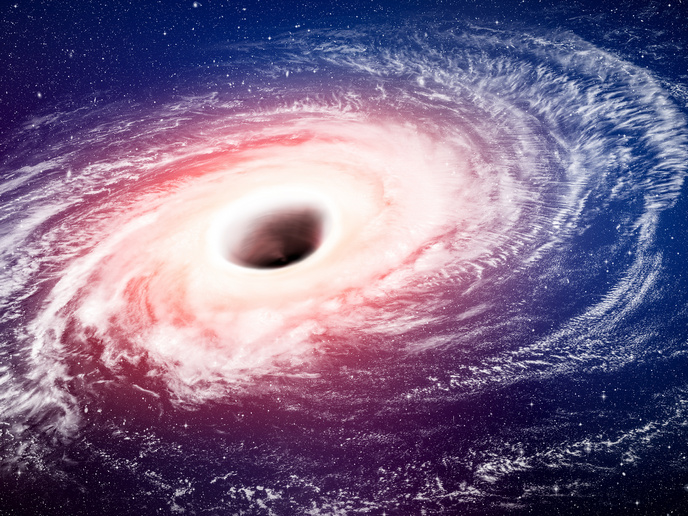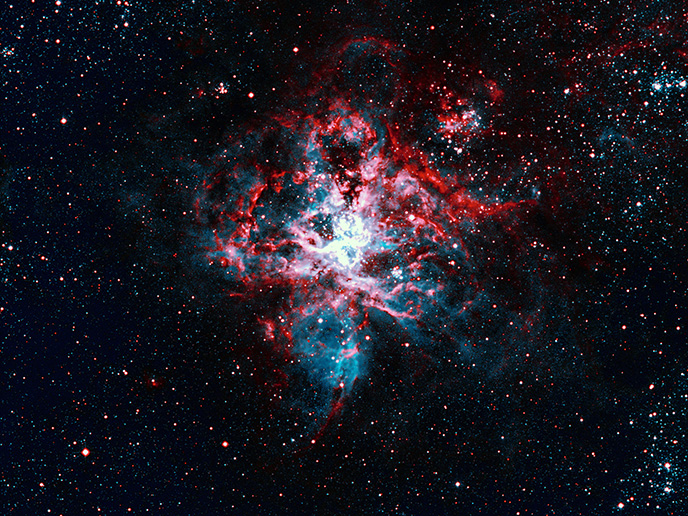Clearing the thin line between central neutron star and black hole formation
Beyond 260-300 M☉ of mass, stars in their final moments have been known to form black holes. Below this mass range, however, things get a bit more unpredictable. From 8 to 140 M☉, core-collapse will lead to a central neuron star or possibly a black hole. The question is, what is the transition region where the formation of a black hole instead of a central neutron star becomes more likely? ‘We tried to better understand the end stages of stellar evolution,’ says Friedrich Thielemann, Professor emeritus of theoretical physics at the University of Basel in Switzerland. ‘We know that low mass stars end up in white dwarfs. We know that above about 8 Msol, we have final stellar collapse after producing an Fe-core. What is still open is the transition between core-collapse supernovae (leaving a central neutron star) and the formation of black holes. Thanks to recent gravitational wave observations by LIGO (Laser Interferometer Gravitational-Wave Observatory), we know that there are black holes of about 30 Msol and even lower masses in some cases.’ For his research, Prof. Thielemann tapped into fields like nuclear physics far from stability, the equation of state of dense objects, 3D magnetohydrodynamics with neutrino transport, and computational methods. Over the first year of the project, he developed databases of nuclear equations of state and nuclear reactions across the nuclear chart. His team: made available an Isotropic diffusion source approximation (IDSA) code for multi-dimensional neutrino transport; provided a detailed code comparison for magneto-hydrodynamic simulations of core collapse; and performed nucleosynthesis predictions for magnetars/collapsars and neutron stars mergers, to understand the temporal evolution of the heaviest elements during the evolution of galaxies. Then came the heavy part, with simulations of the production of intermediate mass and iron-group elements in collapsars/hypernovae/gamma-ray bursts: ‘We could simulate stellar collapse over a wide mass range and noticed that there is a (soft) transition to back hole formation slightly below 25 Msol, but this depends also strongly on the compactness of the stellar progenitor,’ Prof. Thielemann explains. ‘Black hole formation is also possible below 25 Msol, whilst supernova explosions are also possible above 25 Msol.’ Thanks to multi-D simulations, the team also lifted the veil on some aspects of black holes formation and managed to predict gravitational wave emissions. They could determine in which type of explosions processed matter is ejected, what the composition of the matter resulting from explosive nuclear burning is, and how this can explain the evolution of chemical elements during that of galaxies. ‘We also found an important additional channel, where black holes are formed during the merger of two neutron stars resulting from prior supernovae, which eject large amounts of very heavy elements before forming a black hole,’ Prof. Thielemann enthuses. Thanks to work under the FISH (FaInt Supernovae and Hypernovae: Mechanism and Nucleosynthesis) project, the scientific community can now better understand the evolution of element abundances during the evolution of galaxies, and determine which explosive events were responsible for which elements and how their production changes with time. Since the project’s end in December 2016, the team has been working very hard on neutron star mergers that have apparently been observed by LIGO/VIRGO very recently, and which can also be seen as short duration gamma-ray bursts in the near infrared spectrum.
Keywords
FISH, black hole, neutron star, massive star, stellar evolution, supernova, LIGO, gravitational wave, star collapse







